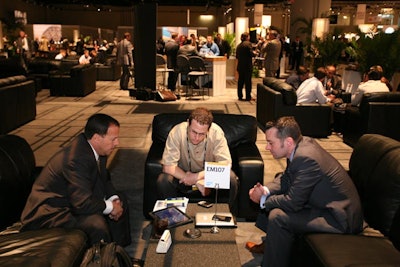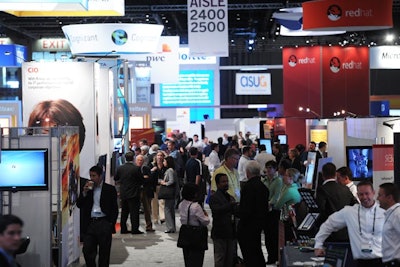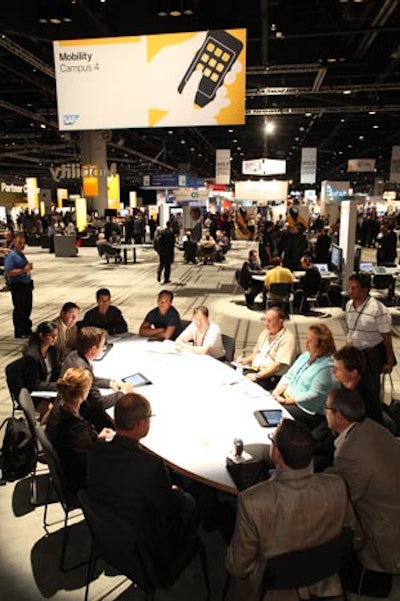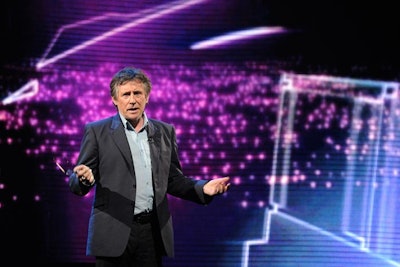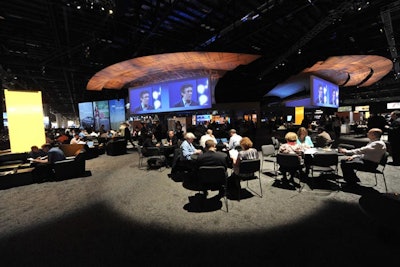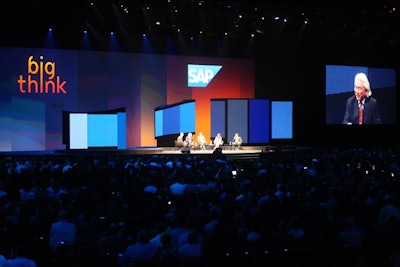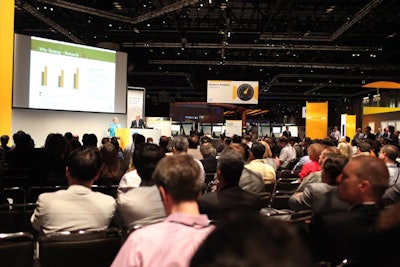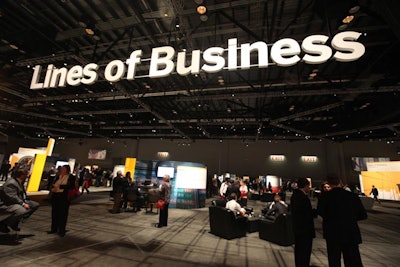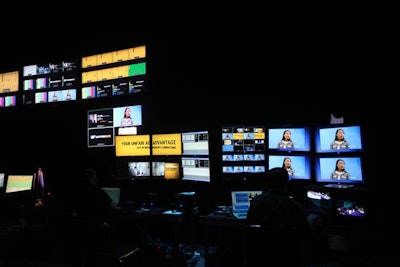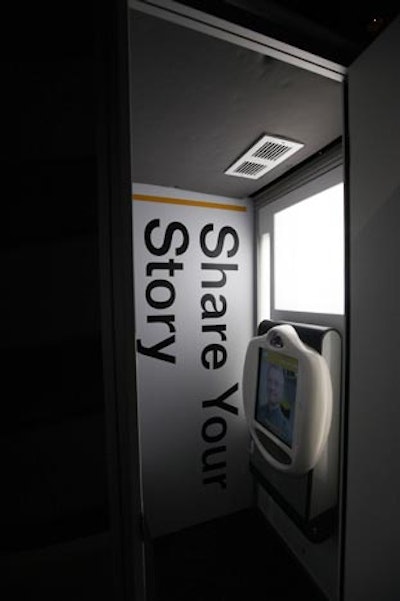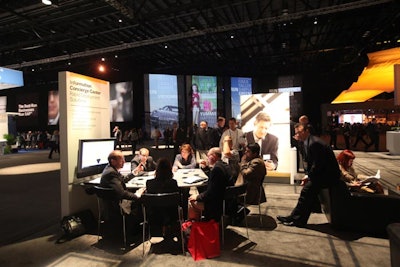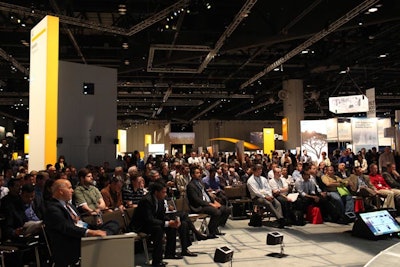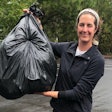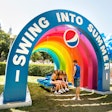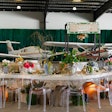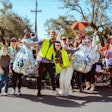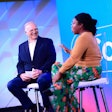With the continued innovation in format and content dissemination at Sapphire Now, we spoke to SAP’s vice president of global events, Scott Schenker, about the company’s strategy and the execution of the event.
Last year’s conference was dramatically different from prior years. You created a hybrid format with extensive Web-based offerings, and you adopted the name Sapphire Now. So how does the 2011 event build on that?
Sapphire Now is in the middle of a three-year transformation that started in 2009. It began from a recognition that people consume data differently. They are looking for things that are relevant to them, not just things that are relevant to us as their host. There will not be the same degree of transformation as you saw from 2009 to 2010. The success of last year taught us an awful lot. It’s much easier to do a second time. We have the same three broadcast centers: studio one for keynotes, studio two from which we will have packaged content that comes out every single day, and studio three for high-level, high-interest interviews. This year we are staging four world tours overlapping on Wednesday [in London, Brussels, Moscow, and Lausanne, Switzerland] that will extend our reach by 3,000 to 3,500 participants. Plus there are another 18 satellite events around the world that will receive real-time feeds or packaged content from Orlando.
Isn’t there a risk that by expanding online and satellite dissemination, you will cut down on the number of people attending the conference?
There’s always that fear. Especially with the virtual platforms to the extent that we are providing, where people can see it real time in high-definition. There were a lot of folks very nervous that giving this many options would result in fewer attendees. Yet we are currently about 14 percent ahead of last year’s number for physical attendance, and we’re not done. We’re also up 15 percent in exhibitors. I think what we are seeing is, the excitement and success of last year’s event is making people want to attend.
So with an audience of more than 14,000 here in Orlando, how do you meet that goal of being relevant and addressing their needs, not just your goals?
Part of being relevant is not just having topics that are of interest to 10,000 people. This year we changed it from a call for papers to a call for topics. Anyone who wanted to come to the Web site—last year’s registrants, our potential sponsors and exhibitors and partners, and even our employees—we encouraged them to tell us what was on their minds. We used the topics to form the content steering committee to determine what content to put on the show floor. It allowed us to react, rather than guess what folks really cared about. Our content presentations have 20-minute limits to them, followed by a 20-minute conversation. And our microforums are small conversations of eight, 10, 20 people around a specific topic.
You doubled the number of those microforums this year, to more than 500 during the three days. That meant you had to set up dozens of small table configurations in the campuses around the floor. What challenges has that created?
We’ve had to rethink the layout of the floor, the people movement, the frequency of how they are repeated, how you share the content. What happens in a microforum versus what happens in a theater is very, very different.
You also doubled the number of social media ambassadors reporting from the conference. What is their role?
The social ambassadors came out of the recognition that being online can be as overwhelming as being at the show. Social media is so broad, it can be hard to find the content you want. This year there will be one covering each of the campuses and each of the cross topics. We have one specifically for Facebook. We asked the 60,000 followers what they would like him to cover and report back on. So we’ll have 11 total, and they all have cameras and will have original video coming to their accounts. This was a little experiment last year that worked really well. We are expanding on it this year.
What are you doing to improve the experience for the physical attendees?
We took the on-screen experience and extended it to the people on site. We have brought the personal agenda and attendee address book to an app that you can download. The guide will allow the physical attendee to have an enhanced experience on site. You’ll be able to adjust your agenda, look at a floor plan, see the Twitter feed, see Sapphire’s YouTube page, see the social media all from your device.
It looks like you really try to take care of attendees. You’ve placed comfortable lounge furniture and beverage and snack stations throughout the floor. What is the strategy behind that?
We’re building a true business environment—not just a trade show—where our audiences can have conversations and conduct business right from the show floor. You’ll notice that even staff working in the campuses are dressed in business attire, rather than T-shirts or polos. As far as taking care of attendees, our strategy is to provide not only space for our content and discussions, but also to anticipate our attendees’ needs with all-day dining and lounge areas for networking right on the show floor. We’re helping them stay on the show floor doing business and making the most of their Sapphire Now experience.
What is one of your biggest challenges?
One of the challenges is remaining relevant and current in the technology. We are having to chase it. We hope that folks understand we are catching up to it as quickly as they are. The iPad was a marvel and somewhat of a rarity at last year’s conference. We ourselves will have more than 400 devices at the show just for demo-ing and showing our products and services. We expect that our attendees will bring one to two devices each.
What advice do you have for other companies looking to transform their events?
Event strategy is nothing more than alignment to the marketing strategy and corporate messaging strategy. Successful events are not just successful because of the score you get on the food or the entertainment or even the net score of the event. They are successful because of the objectives they have, and they are successful when those objectives are reached. One of the things we had last year that was very helpful was a single concise objective.
Last year we wanted people walking away from the event believing SAP was an amazing company. It helped us to stay on course. It helped us to be able to say yes or no to ideas. Does this help us to show SAP is an amazing company? And we saw in the post-measurement that SAP was an amazing company. We didn’t even put those words out there, people said it back to us. This year we have another guiding, simple objective: We want folks walking away saying, "I should be innovating with SAP now." It’s more of a call to action. But in both cases we had a totem to come back to that helped us to stay focused and helped us to adjudicate the messaging and content.
Can you share anything about your new ideas for 2012?
One of the things I want to do is to personalize the registration experience, the question-survey-feedback mechanism, so there are fewer big moments in time and more of a feedback dashboard where people can provide feedback throughout the event, so we are making that even more personal.

